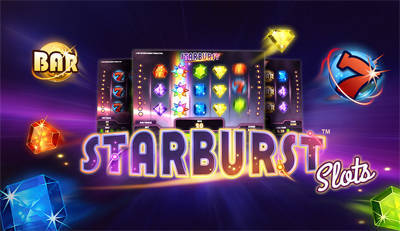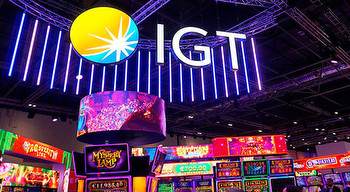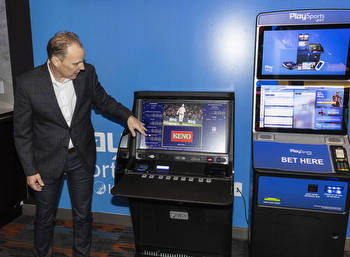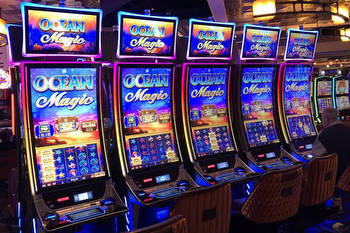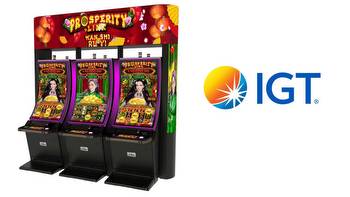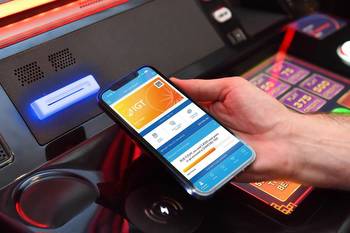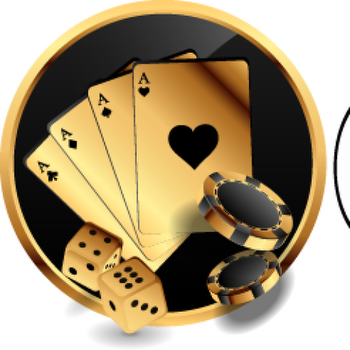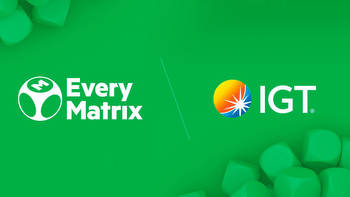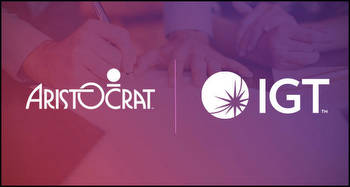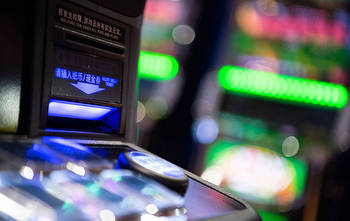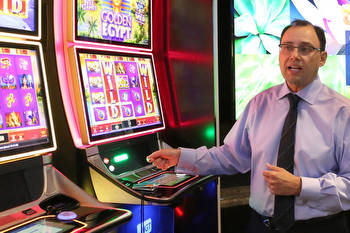Breaking Into The Online Casino Market, One Card At A Time
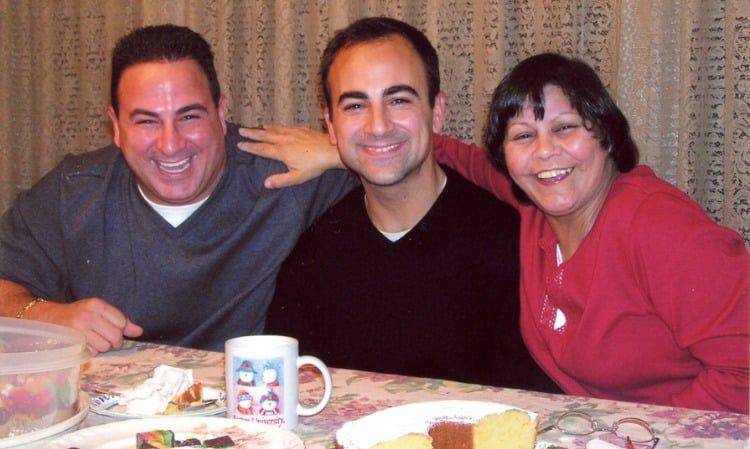
Pete Mastroianni is taking on Ragu in the pasta sauce wars and trying to get Taylor Swift to record one of his songs.
At least that’s what it feels like for the New York lawyer and co-inventor of a would-beiCasinogame called Match 52.
“The challenge is to get it onto a platform, and that’s hard to do,” Mastroianni said. “How do you get Light & Wonder or IGT or someone like that interested in a little game? It’s like being a songwriter, or inventing a pasta sauce — how do you get it on the shelves? It’s a challenge.”
And it’s one Mastroianni is tackling head-on, bringing his game to Las Vegas conventions and, most recently, to the SBC Summit North America conference in New Jersey in May.
He and his small team had their own booth, had the game rolling on a large screen touchscreen, and tried to get Match 52 in front of as many faces as possible.
“We got great feedback for the game,” Mastroianni said. “Sure, we were hoping for a Hail Mary play, someone wanting to take it on, but we weren’t expecting it. We’re hoping due diligence and hard work will get us our shot.”
Mastroianni readily admits — as evidenced by his pasta sauce metaphor — that breaking into this business where he’s competing against massive, worldwide operations is a tall order, but he truly believes he has something worthwhile, and, as such, he’s going to keep going until he succeeds.
Many hurdles from idea to product
“There are many hurdles to taking a new concept for a casino game from a spark of an idea to a fully realized product in the market,” said Daniel Sahl, who is the director of the Center for Gaming Innovation at UNLV and who teaches a class in gaming innovation (which can be taken online again in August, for any would-be designers). “The games — and the developers that make them — are subject to strict regulatory protocols.
“Just as casino operators must be licensed in their jurisdictions, developers of gaming content must also obtain a license, which is not a small feat. For most independent inventors, they will have to find a licensed developer to buy or license their idea and make the investment to build, certify, and distribute the content. The challenge, of course, for the inventor is to find a developer who sees their vision and is willing to discuss acquisition of the IP.”
The patent process presents another major issue.
“It is possible to get patents for a wide range of gaming concepts — my students continue to get U.S. patents issued on table game, slot, and other concepts in gaming,” Sahl said. “A patent application or issued patent adds value to your gaming product as it offers a degree of security and exclusivity to the buyer.
“As always, inventors need to do their research and ask questions. There are some amazing patent attorneys, many based in Nevada, who have experience with gaming tech and offer reasonable rates. I have seen other inventors, however, fall down a needlessly expensive path trying to patent their idea with mixed results.”
One reason for those mixed results: It’s a bit of a closed club in the casino game development world, according to industry insiders.
“It comes down to the basics of what you build,” said one industry source. “You want to use every tool in your playbook to make sure someone else can’t replicate it — or hasn’t already patented it.”
As it turns out, the big casino developers have a bit of a patent stranglehold on many basic facets of casino and iCasino games. From bonus rounds to side bets, there’s probably a patent for it already.
Furthermore, many of the big developers have patent-sharing deals in place, led by industry giant IGT.
“IGT maintains and monetizes the gaming industry’s largest game features patent portfolio and has executed numerous strategic IP cross-licensing agreements with land-based and online gaming suppliers throughout the world,” Nick Khin, the chief operating officer of global gaming for IGT, said in an email. “We leverage this asset to drive growth, inspire industry-wide innovation. and advance the player experience.”
So what would it take for the Mastroiannis of the world to be let into the club?
“When it comes to working with third-party game studios for content design, IGT has a number of partnerships, including through its own Lighthouse Studios organization, based in Las Vegas, which establishes content partnerships based upon a variety of important requirements,” Khin said. “For example, third-party solutions must be highly complementary to IGT’s existing product roadmaps and content strategy, and create or advance market opportunities. Additionally, IGT’s content partners are required to demonstrate a global, omnichannel mindset and uphold high standards of ethics and a deep commitment to responsible gaming.”
To some, the above more or less reads as “do not enter.”
“For a small guy who has good tech and good ideas, they don’t have to agree to let you in,” another industry source said. “They can make it difficult for a small guy to enter into this area. There’s no way around this. It’s like Apple has its walled garden for apps. This is the walled garden for casino games.”
Where do things stand for Mastroianni and Match 52? Patent pending, trademark filed, waiting for an official and literal stamp of approval.
A family mourns, a game is born
“My sister, Michelle, passed at 52, and that was a head-spin for all of us in the family,” Mastroianni said when asked to recall the origins of his game. “Something about that you don’t get over. It changes the way you think about life when someone close to you passes like that, unexpected and so young.”
This was 12 years ago, and Mastroianni said his sister’s passing resulted in the rest of his immediate family — his mom, dad, and brother Nick — spending more time together. In fact, his brother and father started a vending route in the Bronx, which eventually expanded to cover all five boroughs.
Their dad died a few years ago, and it was around this time that Nick stumbled into a game with a deck of cards. It wasn’t really an “invention,” per se, but Nick would show it to bartenders on the vending route, and they all loved it.
It was simple: Take a deck of cards, and start reciting “ace,” “two,” “three,” “four,” and so on as you flip each card over. The goal was to get through the deck without the card you called matching the card that was flipped.
“Every time he showed it, people couldn’t stop doing it,” Pete Mastroianni said. “That’s how it started. A deck of cards, a challenge, people doing it 10, 15 times, trying to get through the deck. The sense of excitement of getting through the deck — or when the card hits — was real. My brother said, ‘This is a game.’”
At first, the thought was to turn it into a board game, but Mastroianni quickly realized there could be a gambling component. He started to grid out the possibilities and potentials. A computer programmer friend ran it through a billion simulations. Odds were created. The game got toMichael Shackleford — “The Wizard of Odds” — who ran a 4.9 billion-hand simulation to come up with the official odds as played today.
‘Million to one’
While breaking into the world of casino games is difficult, it’s certainly not impossible.
Frank Mugnolo of FM Gaming is living proof.
The CPA by day is a game developer as a sideline. And while he’s primarily building add-ons for brick-and-mortar table games, the process is still more or less the same.
“I was told it was a million-to-one shot to get a new game or addition to a game on the floor,” Mugnolo, who is based out of Chicago, said. “The game has to be good for players, fun to play, has to give the house an edge, and has to never have been thought of before.”
Mugnolo has had two successful ideas in recent years, one an add-on to craps called “Mugsy’s Corner” and another an add-on to roulette called “2G’s.” Mugsy’s Corner is where the “Big 6” and “Big 8” are on the felt, and adds a 2/1 bet on a 7 on the come-out roll (with a 2, 3, or 12 losing.) And if it’s a point roll, you get 3/1 if the very next roll is a 7. As for 2G’s, that’s even simpler: The bettor is hoping for two consecutive spins where the ball lands in either 0 or 00. It pays 350/1.
Both side bets are currently available in a handful of casinos, and Mugnolo says they will be at Bally’s Chicago — which will be Illinois’ largest casino when it opens.
Despite Mugnolo’s success, he still cautions this world is tough to break into.
“These big companies come in and do what they want,” Mugnolo said. “If they see a good idea, they’ll work with you and cut some type of deal. They’ve been around a long time and they can pick and choose. And just to get in the door … you have to get to the right person, and that’s next to impossible to begin with.”
Brendan Bussmann, the managing partner of B Global, a consulting firm for the gaming industry, recognizes the difficulty of breaking in, but strikes a hopeful tone for the little guy.
“Innovation is key to this industry, especially as we continue to look at expanded ways of entertainment and new offerings,” he said. “The big and little fish understand this and there is enough room for them to coexist.”
But even with that, Bussmann recognizes the hurdles are many.
“It all depends on how equipped and how resourceful the little guy is against the big fish,” he said. “If they go in with lots of tools in their shed, they have a chance, but one of the challenges continues to be bringing your product to market with high regulatory costs, and that includes testing. It’s why the bigger fish survive — because they have the budgets to support these endeavors more than the little guys.”
Make a match
As for the little-guy innovation that is Match 52, this game is relatively straightforward.
The goal is to make a match, and there are five different ways to do so: direct match, match a row, match a column, match a color, or match a suit. There are corresponding odds that go from 1/2 (bet a buck to win 50 cents) if there is any match in the first 13 cards, all the way to 725/1 if someone bets that all 52 cards will be dealt and the 52nd card will be a king. Betting on “red” or “black” pays even odds, the suits pay 3/1, and “no match” pays 52/1. Players can bet on a match showing up at any given time. As soon as a card matches, the game is over.
“It’s a little like roulette, but also a little like craps — when folks are on a roll, the energy comes up. But every single time, there’s a chance for a heightened experience,” Mastroianni said. “As you get through the second and third round, the emotions heighten. You see that ramp-up of excitement and anticipation.”
The game — which is available for download on iOS and Android devices as well as on desktop (but not for gambling purposes) — didn’t sell at SBC, but Mastroianni isn’t deterred.
“We had a really good response,” he said. “Everyone who played enjoyed it. So many people stopped at our booth, learned the game, had fun. It was a great experience. We were hoping to get picked up, but realized it was a longshot. But we’re not going to stop. We’re going to license this game in any way possible.”







